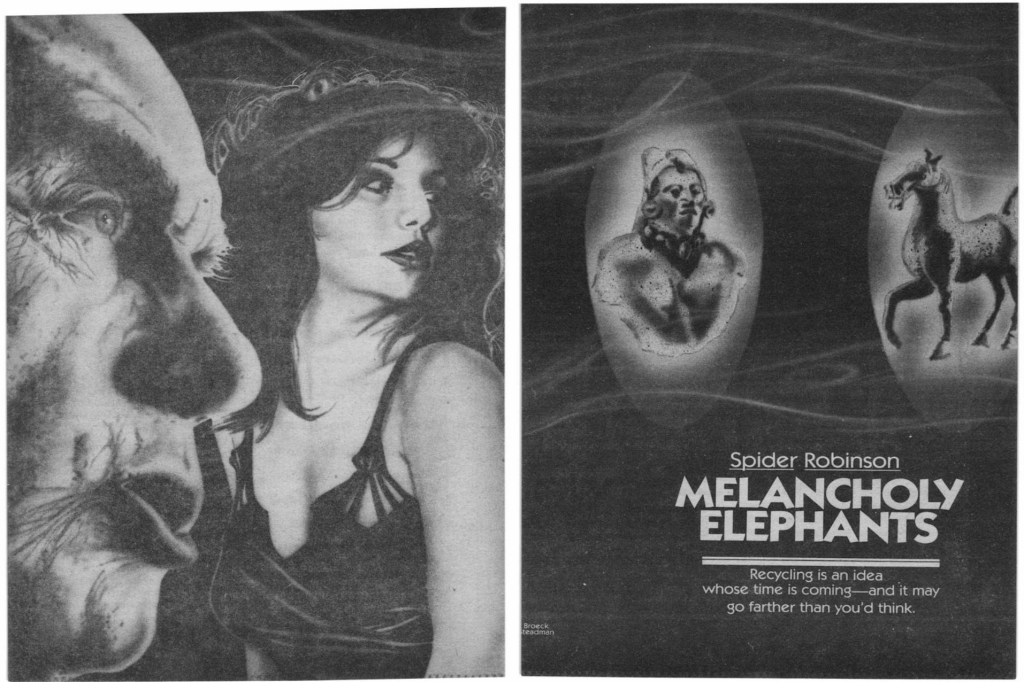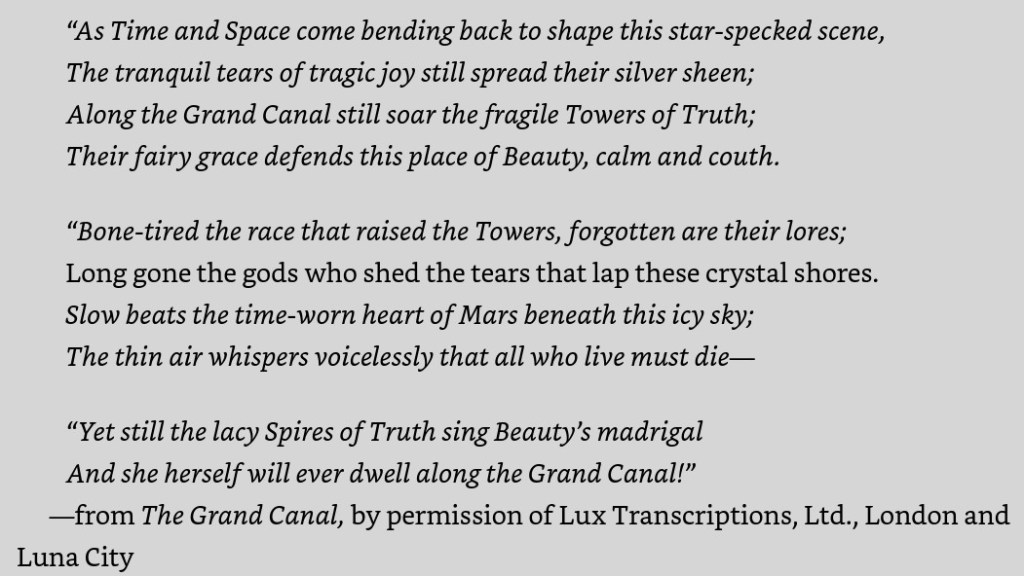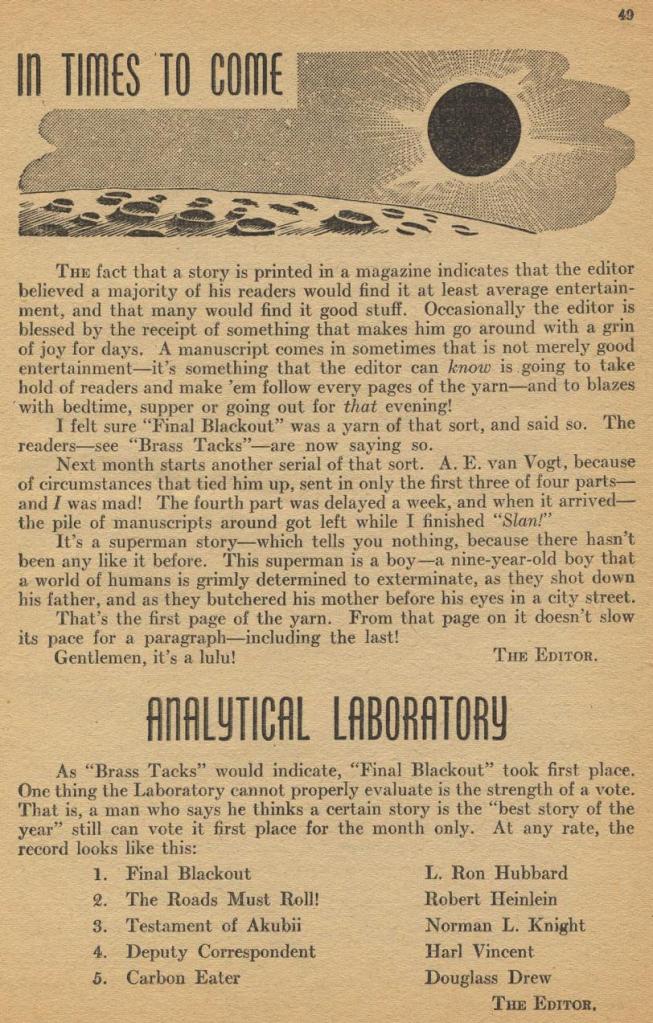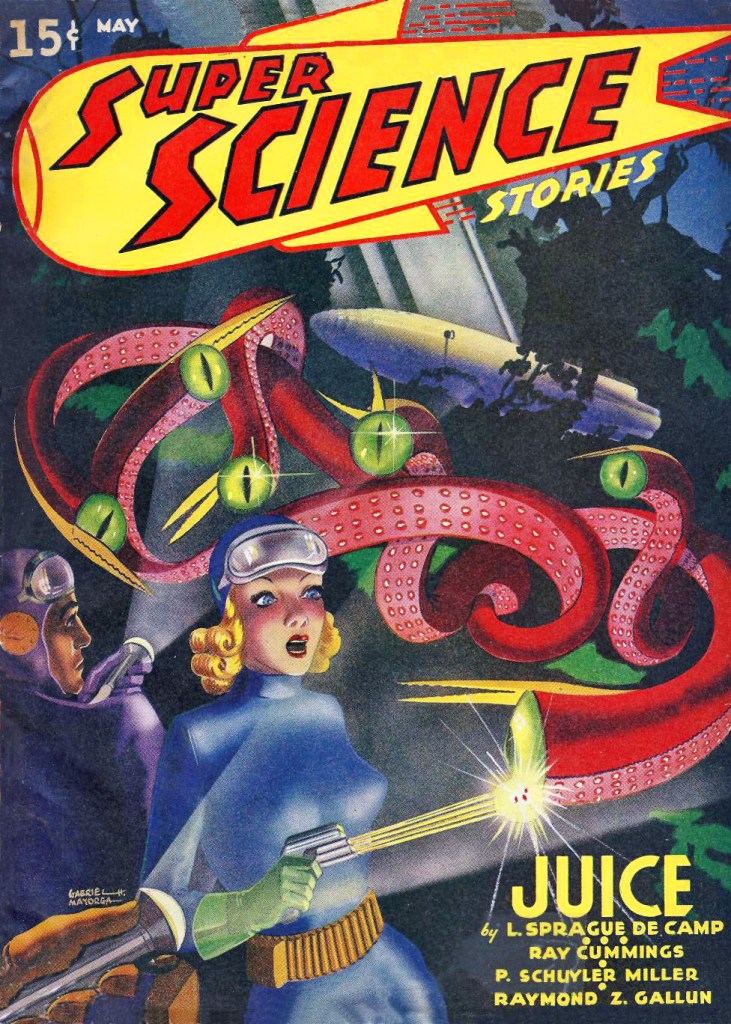I often encounter the opinion that science fiction has changed. Is it true? Over my lifetime novels have gotten longer, trilogies and series have become more common, there are more female authors, and the genre has been heavily influenced by fantasy. Before Star Trek in 1966, the world of science fiction seemed tiny, and that TV show brought in millions of new SF fans. Then Star Wars in 1977 brought in tens of millions of new SF fans. (But I’m not sure how much the population of science fiction readers grew.)
But these are all externals. I’m wondering if the essence of science fiction itself has changed. Yes, the writing has gotten better, and the literary world has become more accepting, but do modern readers get something different out of reading science fiction than what I found in the 1960s? Why do I prefer older science fiction? Is it more than just because I imprinted on it when I was young? I’m not the only one who feels this way. Many aging Baby Boomers say they prefer older science fiction too, but so do some young book reviewers.
Over the last forty days I’ve read five novels by Philip K. Dick written between 1959-1963, plus Ammonite by Nicola Griffith and The Player of Games by Iain M. Banks. These aren’t new novels, but newer than what I’m talking about, and they feel different. Over the last year I’ve read such new SFF books as Sea of Rust by C. Robert Cargill, Babel by R. F. Kuang, and The Mountain in the Sea by Ray Nayler. I know this is a small sample, but I’ve also read hundreds of science fiction short stories, both old and new, over the last couple of years.
All I can say is science fiction from the first half of my life (1951-1987) feels much different than the second half (1988-2024). The change started around the time of Star Wars in 1977. George Lucas and Steven Spielberg might be the main factors changing the genre. I confess that I’ve long thought that science fiction ran out of original ideas at some point, and the genre has been living on recycling ever since. But women writers, literary standards, and fantasy radically changed the flavor of science fiction since the 1970s too.
But what if the change in science fiction is due to other factors? Yesterday I watched a video by Bookborn, “Do SFF authors think we are stupid now” that offered two innovative ideas. Bookborn suggests that current science fiction lacks subtlety. She also suggests that newer science fiction requires less critical thinking because newer authors tell their readers what to think rather than letting the readers draw their own conclusions. Bookborn also felt authors wrote about topical problems too obviously. Even with books she likes, presenting viewpoints she agrees with, she felt they were too explicit, lacking subtly. She admits this problem is not measurable and highly subjective.
Bookborn then cites an essay, “The Death of the Author” by Roland Barthes. The essay in long, so I suggest reading Wikipedia’s summary instead, but to give you a quick idea, here’s a quote from the first paragraph at Wikipedia:
"The Death of the Author" (French: La mort de l'auteur) is a 1967 essay by the French literary critic and theorist Roland Barthes (1915–1980). Barthes's essay argues against traditional literary criticism's practice of relying on the intentions and biography of an author to definitively explain the "ultimate meaning" of a text. Instead, the essay emphasizes the primacy of each individual reader's interpretation of the work over any "definitive" meaning intended by the author, a process in which subtle or unnoticed characteristics may be drawn out for new insight.
Bookborn is quite articulate at explaining her position, and her position is more complex than what I’m conveying here, so I recommend clicking on the link above to watch her video. Bookborn goes on to say that current authors hide from their readers because of social media. They fear attacks on what they say so they are overly careful about what they put forth. I had an additional insight. Because modern science fiction is often about elaborate world building, modern authors struggle to be precise so readers will see clearly what they have worked so hard to invent.
In Ammonite by Nicola Griffith and The Player of Games by Iain M. Banks, I was disappointed by the blandness of the author’s voice. And I never felt the presence of Griffith or Banks in their stories. Yes, in both cases their world building is beautifully detailed, but both authors left no mysteries about their stories or their personal views for me to ponder. I have theories to explain this too.
Modern writers prefer a close personal third point of view, or first person, to the older omniscient point of view which is better suited for conveying the author’s voice. I also find that the novels I admire most are ones written by authors I love reading about. Maybe what I love about older science fiction is my connection to the author.
Any science fictional world that’s set far from Earth becomes a fantasy world, and thus far less complex than our reality. Such fictional worlds are far from the infinite complexity of contemporary controversies. Writers can avoid personal philosophy by using allegory. Reading such fantasies means passively consuming what the book describes. Such stories don’t lend themselves to ambiguity and complexity, which makes the reader think. Our reality is infinitely full of shades of gray. Made up fictional worlds tend to be consistently designed because authors want them to be understandable to readers unless you’re Gene Wolfe writing The Book of the New Sun.
The five Philip K. Dick novels were far more compelling and thought provoking than the books by Griffith and Banks. I often try newer science fiction, but they usually come across as merely fun stories. Overall, newer science fiction stories are like going to Disneyland. They dazzle but when the ride is over, are quickly forgotten. I’m still thinking about those Philip K. Dick novels. When nothing else thrills, switching to a Philip K. Dick story will get my mind excited. Why is that? I believe it’s because his Dick’s books are closer to real life, and that makes them ambiguous and mysterious. They offer endless room for speculation. I’m reading another biography of Philip K. Dick, my sixth, I think, because Dick’s novels make me crave understanding.
Dick’s novels were compelling, Ammonite and The Player of Games were not. They aren’t bad, in fact, they’re exceptionally good stories, just not compelling. Dick was obsessed with deciphering reality. He doubted that what we perceive is real. He was horrified by other people, often thinking they were machines, disguised supernatural beings, or illusions of the mind. Paranoia fueled his narratives. Our reality was too complex for Philip K. Dick, and it drove him into insane states of mind trying to figure it out. Every Philip K. Dick novel is another exciting speculative assumption about reality.
Interestingly, Dick doesn’t fit the theory about the author being dead. Yes, his stories are wonderful without knowing anything about Philip K. Dick, but their complexity increases the more you do know about him. I want stories where the authors aren’t dead by Barthes criteria.
By coincidence, both The Player of Games and Time Out of Joint are about game playing. However, the first novel feels contrived. It’s hard to believe. But the second, which is far more fantastic, yet feels very real and believable. Why is that?
I believe the reason I love older science fiction is because it speculates about reality. Whereas newer science fiction is focused on telling a delightful story. Lucas and Spielberg overly inspired newer writers to focus on entertaining the masses.
I loved the Heinlein novels of the 1950s because they speculated about future space travel. That was before NASA showed us what real space travel would be like in the 1960s. Heinlein’s stories honestly tried to speculate about traveling to the Moon or Mars. Space travel in Star Trek, Star Wars, or the Culture novels of Iain M. Banks are really fantasies. Space travel in Red Mars by Kim Stanley Robinson is somewhat speculative.
Most science fiction isn’t very speculative, even the old stuff. However, novels like Flowers for Algernon or Earth Abides feel far closer to reality. And I’m sure many people will point out that stories by Philip K. Dick are extremely fantastic, yet their characters feel like ordinary real people, and that grounds them.
For all his insanity, Philip K. Dick struggled to understand reality. And I think the reason I admire many older science fiction writers is because they were commenting on reality. I do love entertaining stories, but pure storytelling seldom offers much to think about.
I’m not sure I understand “The Death of the Author” in the same way as Bookborn. It seems to me that classics were written by authors whose personality dominated their fiction. Think about Jane Austen, Charles Dickens, F. Scott Fitzgerald, Eudora Welty, Ernest Hemingway, Flannery O’Conner, Jack Kerouac, or the science Fiction writers like H. G. Wells, Robert Heinlein, Philip K. Dick, Theodore Sturgeon, Ursula K. Le Guin, Harlan Ellison, Zenna Henderson, Samuel R. Delany, John Brunner, etc. If you want to write a great science fiction novel, I think it must connect with reality. Just think how silly and fantastic Slaughterhouse-Five is, yet Vonnegut points to reality, and that makes it a great novel.
James Wallace Harris, 2/4/24























